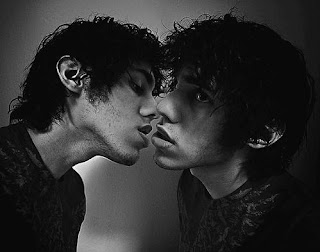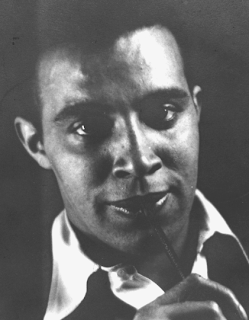Ganymede: a literary/art print journal - Issue #4 Out Now!
 Ganymede Issue #4
Ganymede Issue #4Published by Lulu
Review by Eric Karl Anderson
What’s so refreshing about this relatively new gay journal is the informed understanding of our queer past it brings when offering a survey of the arts. This makes for a rich portrait of how the gay community has evolved over the years while offering ground-breaking new creative work that hints at where we’re going. For instance, the first issue features an astute account by John Stahle of what New York City meant for a gay man in 1968 while also elaborating how it has transformed forty years on. Later issues have featured sympathetic new translations of Cavafy’s poetry alongside the emotional and sensual photographs by Simon Pais-Thomas and the refreshing new fiction of NYC writer Sam J Miller. The page numbers of Ganymede are increasing with each issue that’s published showcasing a fascinating cross section of references from an examination of Muscle Ramon, the first online male pinup brought to fame by gay bloggers, to an account by Richard Canning of an enormous auction of Yves Saint Laurent’s art collection raising funds for AIDS research.
In the new issue #4, Christopher Roland offers a snapshot account into the daily life of gay porn and bodybuilding star Matthew Rush. The atmosphere behind the camera is nothing like the horny sex being filmed. With squabbles between the porn stars’ boyfriends and the tedious wait for Viagra to kick in, a porn set is anything but erotic. Roland examines how the scattering of films these porn stars make act more as publicity for their oftentimes more lucrative escorting services.

Fabio Panichi’s photographs create a dialogue between the mediums of painting and photography. They primarily feature instances of self-portraiture where the artist treads the line between these two in search of illumination that sometimes takes the form of a burst of light. The effect is oftentimes startling causing you to do a double-take given their surrealist Magritte-like slant. There is also a tension between literature and the visual arts evident in many photographs, depicting an oftentimes naked man grappling through an imaginative landscape seeking inspiration and knowledge where he can find it. These are very strong pictures by a skilled young photographer.
 Jee Leong Koh
Jee Leong Koh
This issue also features a poetry slam section which showcases the debut publications of seven talented gay poets. It’s fitting that Jee Leong Koh’s poetry follows after Panichi’s photographs as Koh is in a dialogue with the visual arts as well. Simmering with violence and bodily harm, Koh’s poetry hints at a dangerous past that makes itself felt in the movements of everyday life. Some of this poetry also seeks to create a self portrait while referring to specific artists, filtering their style into the poet’s unique form of self expression. Within his poems the body is annihilated to declare an individual is not simply defined by his physical form alone. Koh skilfully uses his artistic ancestors as a touchstone to understand himself.
 Zhuang Yisa
Zhuang Yisa
James Newborg’s poetry imbues coded meaning into everyday objects highlighting the emotional rifts between the presence of memories in our day to day interactions. Matthew Stradling is a well known visual artist, often depicting male nudes. His first published poetry in this issue explores the destructive urges of desire and the irrepressible longing for what cannot be obtained. Jon Rentler’s poetic voice is urgent and full of a lacerating tenderness, longing for a reconnection through a messy landscape of affairs and spurned lovers. Dug McDowell’s poetry explores adult themes using humorous nursery-rhyme-like rhythms. The sensuality of encounters in the outside elements is infused into the poetry of Zhuang Yisa. Matt Cogswell’s poem follows a typical afternoon which I’m sure many web-savvy men who are reading this will be able to identify. Online connections are made, lost and misfired using multiple usernames across a series of websites with the result often only being disappointment and shame.
Following these rich poems are a series of photographs by Andrea Francesco Berni. Like his sometimes collaborator and fellow countryman Panichi, Berni’s photographs include a lot of self portraiture, but contain a much more playful and relaxed feel. The pervading mood is a sense of duality and weightlessness. Apart from his work included here, Berni’s series of modern Alice in Wonderland photographs featured on Flickr are definitely worth a look.
Ryan Doyle May’s daring short story “Almost No Memory” recounts the prolonged death of the narrator’s mother. This is followed by memories of previous occasions when his father entered his bed and the sensation of their sexual exploration. When his mother died, the covert encounters between the man and boy during the night ended as well. May brilliantly writes about his protagonist slipping into his mother’s wedding dress in a desperate effort to reclaim the connection he’s lost with his father and take his mother’s place.
Daniel Rodrigob Schultz could be the Brazilian equivalent of German photographer Wolfgang Tillmans. His pictures feature action shots of young attractive friends in various states of undress rollicking through the night and day, basking in the sun or caught in a moment of contemplation in the shadows.
B.R. Lyon’s evocative story “As is, I” describes what might be an imagined sensual evening in a rented apartment in Cairo. The lover is absent, but he is there in the narrator’s mind. The projected encounter feels entirely real as the narrator gropes his own body imagining that it is that of another man. A repeating image of a headless body gives a dark overcast to this night of intimate escapism.
There are three more series of self portraits which explore the male nude and a sense of splintered identity. Rene Becker’s photography offers double shots of the author “alone with himself” in a domestic setting. Many of these pictures feature Becker fighting, arguing with himself, contemplating self destruction or simply looking bored. It’s a meditation on isolation and loneliness that is easy to sympathize with.

Pablo Moran, Jr’s photos also show some double takes of the author either seeking a sensual union with himself or inextricably tied to himself by a strip of fabric or barbed wire. The images where the photographer is presented alone suggest mystical experience, especially when interacting with technology.
Davide Poggi photos hint at a violent or self destructive personality, sometimes torn apart by light or crouching naked in a crumbling or desolate landscape.
 Bruce Nugent
Bruce Nugent
The three chapters from Bruce Nugent’s novel Gentleman Jigger provide a fascinating insight into the Harlem Renaissance black artistic movement of the 20s and 30s. Here some of the leading figures of the time from this circle are fictionalized in a group known as the Niggeratti. However, these extracts are more than just a time capsule depicting the vibrant personalities and social issues that this important group were grappling with. Nugent’s writing is direct, powerful and his descriptions of the large cast of characters are full of wonderful insights hinting at deeper psychological complexities. Nugent also was the only members of this black artistic movement that dared to openly deal with homosexuality in his prose. It’s surprising that this valuable piece of writing was only published last year by Da Capo Press and Tom Worth should be praised for resurrecting his writing.
Another historical treat included in this issue is Oscar Wilde’s story “Lord Arthur Savile’s Crime.” At a dazzling social affair Lord Arthur has his palm read and is told that he is to become a murderer. He desires to marry, but decides he must fulfil his destiny and murder someone before he can be wed. The story is filled with Wilde’s typical paradoxical witticisms: “nothing looks so like innocence as an indiscretion” or “If a woman can’t make her mistakes charming, she is only a female.” It is a fine example of how the great author succeeded in turning “the conventional wisdom of the Victorians on its head” while exposing the queer nature of all humankind.
As you can see, Issue #4 offers an enormous amount of stimulating prose and photography to enjoy. The rich diversity and craft exhibited in this issue has left me with a deeper understanding about where we’ve been and where we’re going as a gay community. Ganymede is gaining momentum and is definitely a journal to watch.
Eric Karl Anderson is author of the novel Enough and has published work in various publications such as The Ontario Review, Harrington Gay Men’s Fiction Quarterly, Blithe House Quarterly and the anthologies From Boys to Men and Between Men 2.
Labels: Gay Arts Journal



0 Comments:
Post a Comment
<< Home